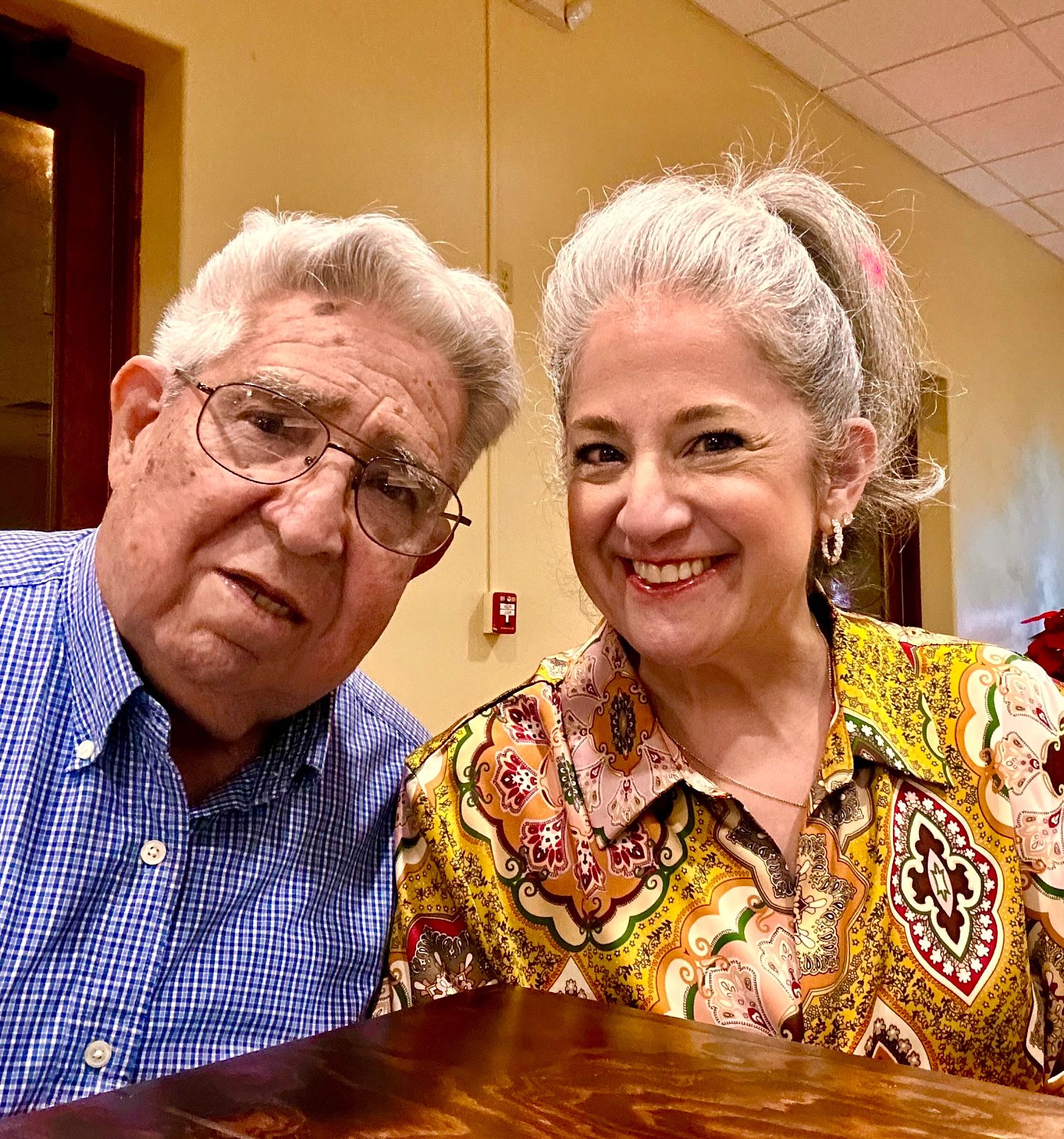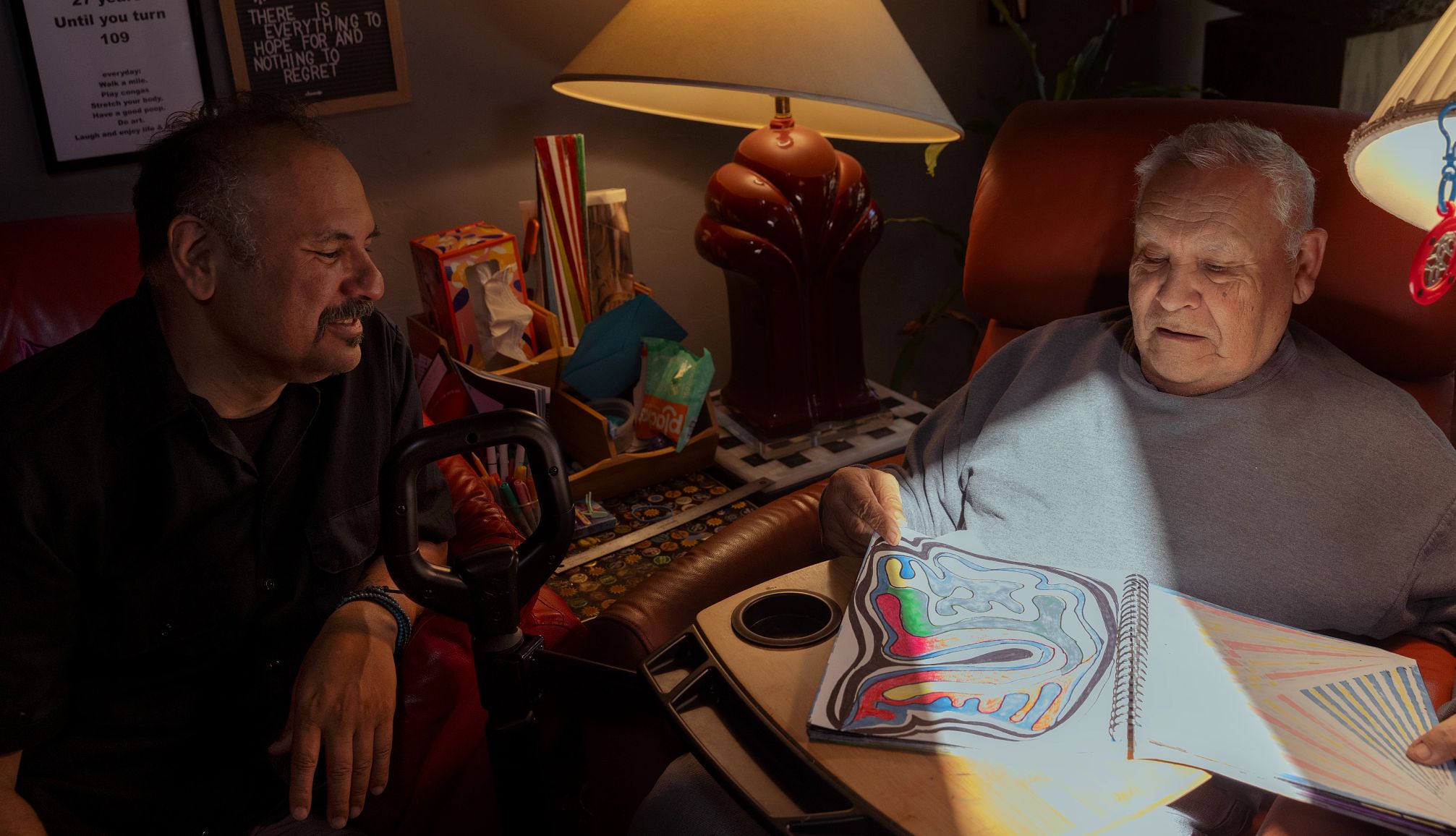AARP Hearing Center


Gabriela de Anda says she had “a career and a life” in San Antonio when everything changed in five hours.
A full-time business analyst for a national company, de Anda, 58, suddenly found herself a caregiver.
“My mother was Dad’s primary caregiver and was 10 years younger than my dad. I never thought my mother would die before my dad. She had a heart attack and died in one day,” de Anda says. “There was no backup plan.”
“It was Oct. 21, 2021, on a Thursday night,” she says. “I was here Friday morning and I haven’t left.”
“I just walked away from my apartment,” de Anda says of her possessions now in storage. “I’m the only girl in the family and I’m Hispanic and I really believe culture plays a role. Typically, it’s left to the daughter to care for parents — even though I left home at 17 and have a master’s degree.”


Turning ‘chaos’ into action
How de Anda became the default caregiver for her 88-year-old father, Crescencio de Anda, is all too common for many adults. When she left her apartment that day in 2021, she never expected to make the 150-mile move back into her childhood home in the border town of Del Rio, Texas. She’s among an estimated 42 million U.S. adults who are informal and unpaid caregivers to adults age 50 or older. With growing numbers of individuals who aren’t partnered, don’t have children or are estranged from family, those who work in the caregiving space say having a backup plan for caregiving isn’t talked about enough — until something happens.
“There’s an initial moment of chaos,” says Brian Carpenter, a professor of psychological and brain sciences at Washington University in St. Louis. “The family gets galvanized” into figuring out a new caregiving plan.
“Now that the primary caregiver is compromised, other people have to step up and that brings stress into their lives. You can’t ignore the emotional stress of having to step up the caregiving,” says Carpenter, a clinical psychologist who’s heard of such instances in his private practice. “A second step is deciding who’s going to do it — and agreeing on it.” Carpenter notes that often families don’t know all the things the caregiver was handling for their loved one, which adds to the scramble.


Needing a secondary backup caregiver
Eldest son Carlos Luis Olivas III assumed the primary caregiver role when his father, Carlos Luis Olivas Jr., now 83, was diagnosed with Alzheimer’s in 2017. Later, Olivas asked his younger brother to move back home to Sacramento, California, from North Carolina to help with the care, which he did in 2019.
Despite what Olivas calls “a partially planned template of a plan,” his brother’s 2022 death upended things.
“We utilized an emergency backup plan with my brother’s passing and then we had to use another backup plan when I broke my leg in August of 2023,” says Olivas, 56. His daughter Eva Acuña-Olivas, 27 — who lives with her father and grandfather — had to balance her work and school with caregiving for several weeks while her father went through rehab for his broken leg. Because his father had bought long-term care insurance, Olivas says they do have limited hours of Monday-Friday caregiving help.
































































More From AARP
Lisa Ling Explores the ‘Cost of Caregiving’ in a ‘CBS Mornings’ Special
In a 3-part special, she delves into the ‘catastrophic’ caregiving issues impacting America8 Major Health Risks for People 50 and Older
A look at the top killers — and how to dodge them
Don’t Let Family Caregiving Ruin Your Financial Future
8 ways to protect your money while caring for a family member or friend